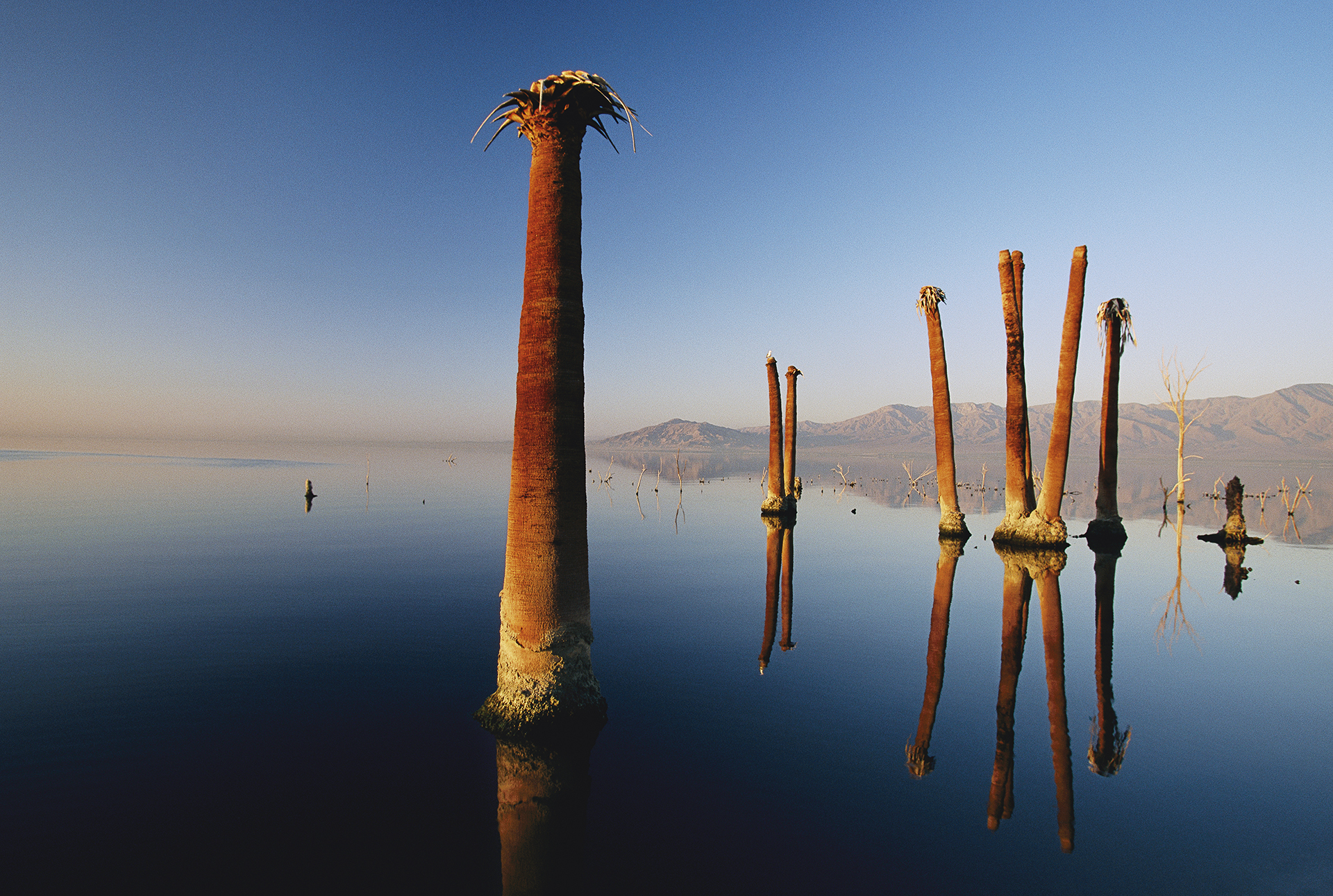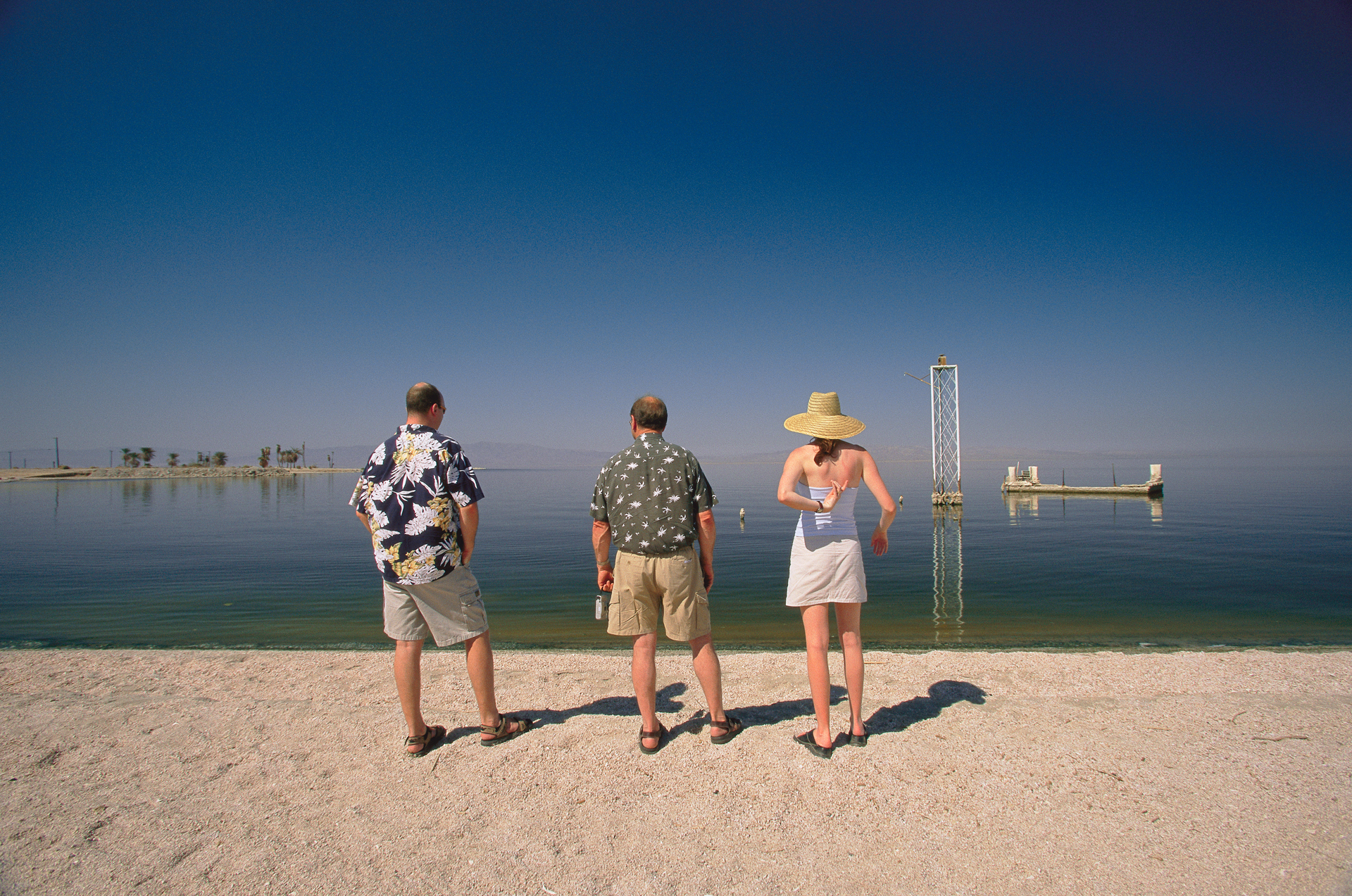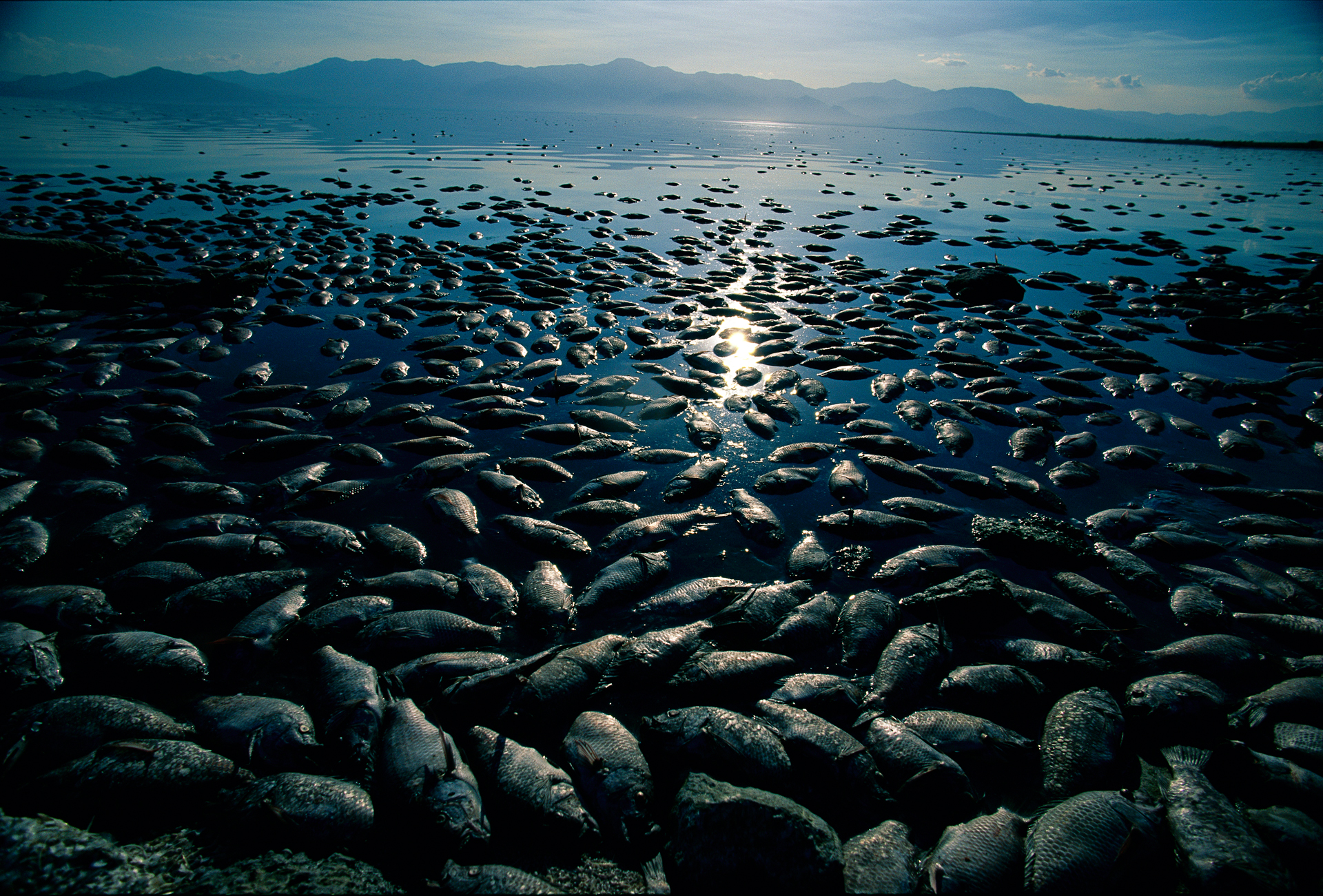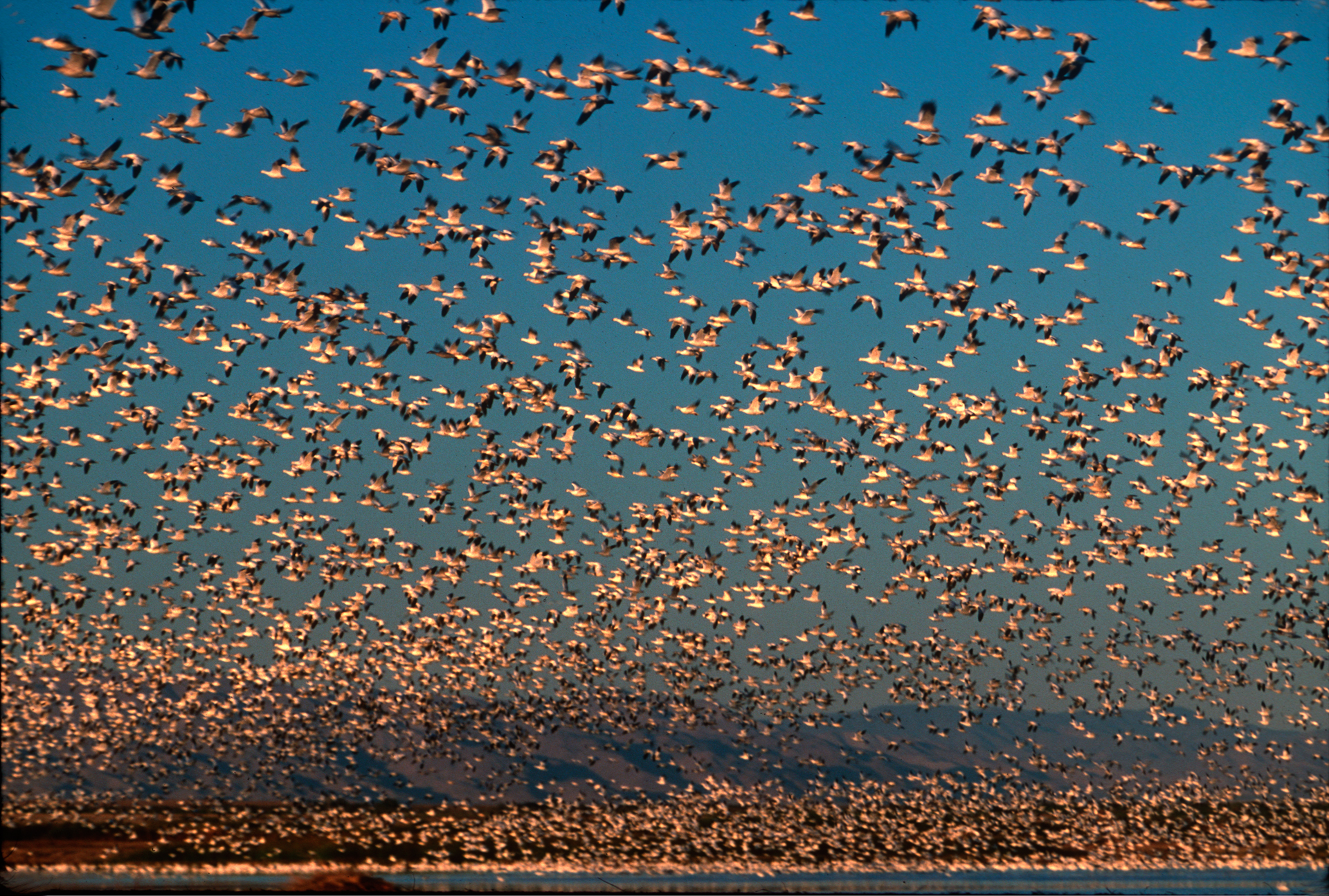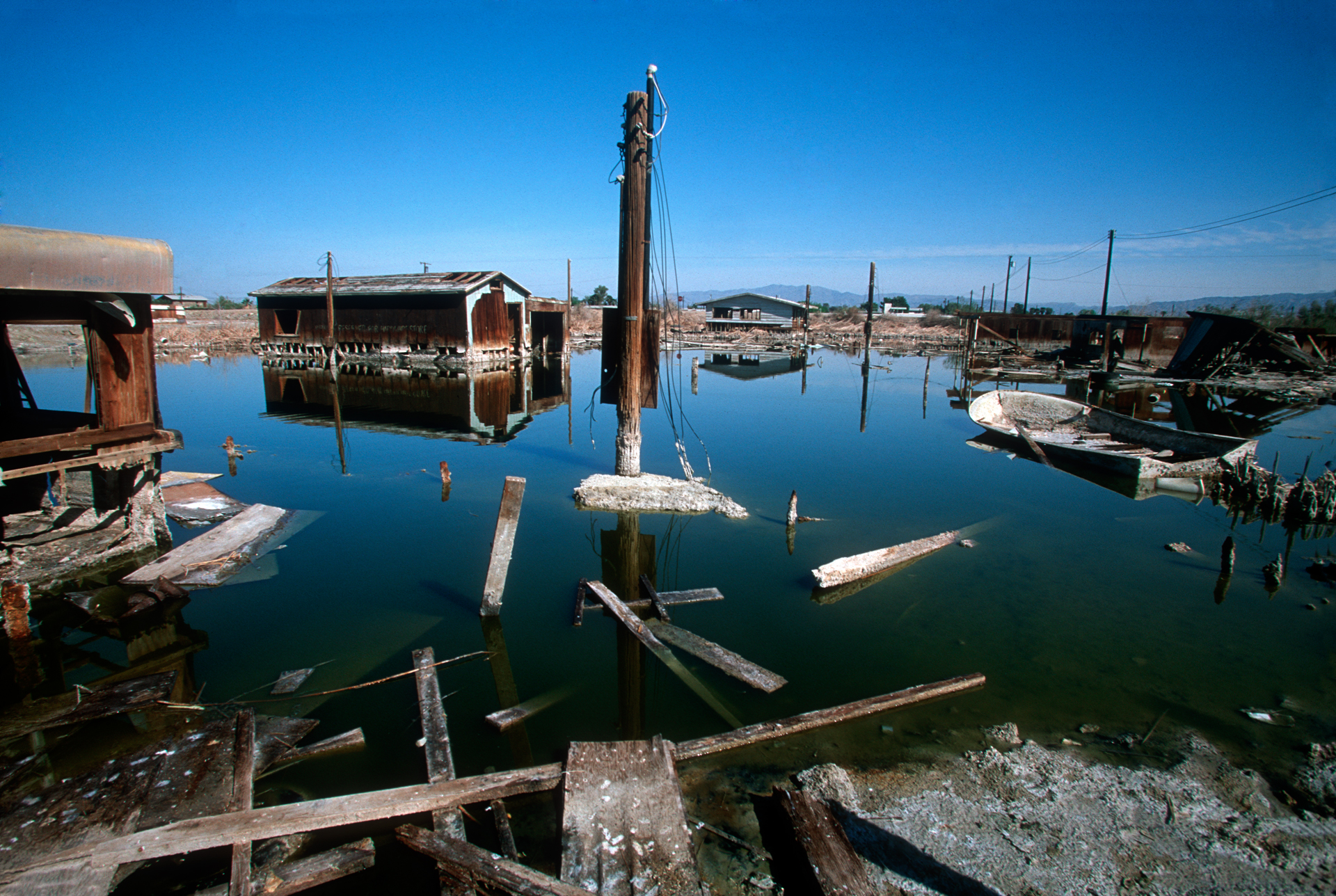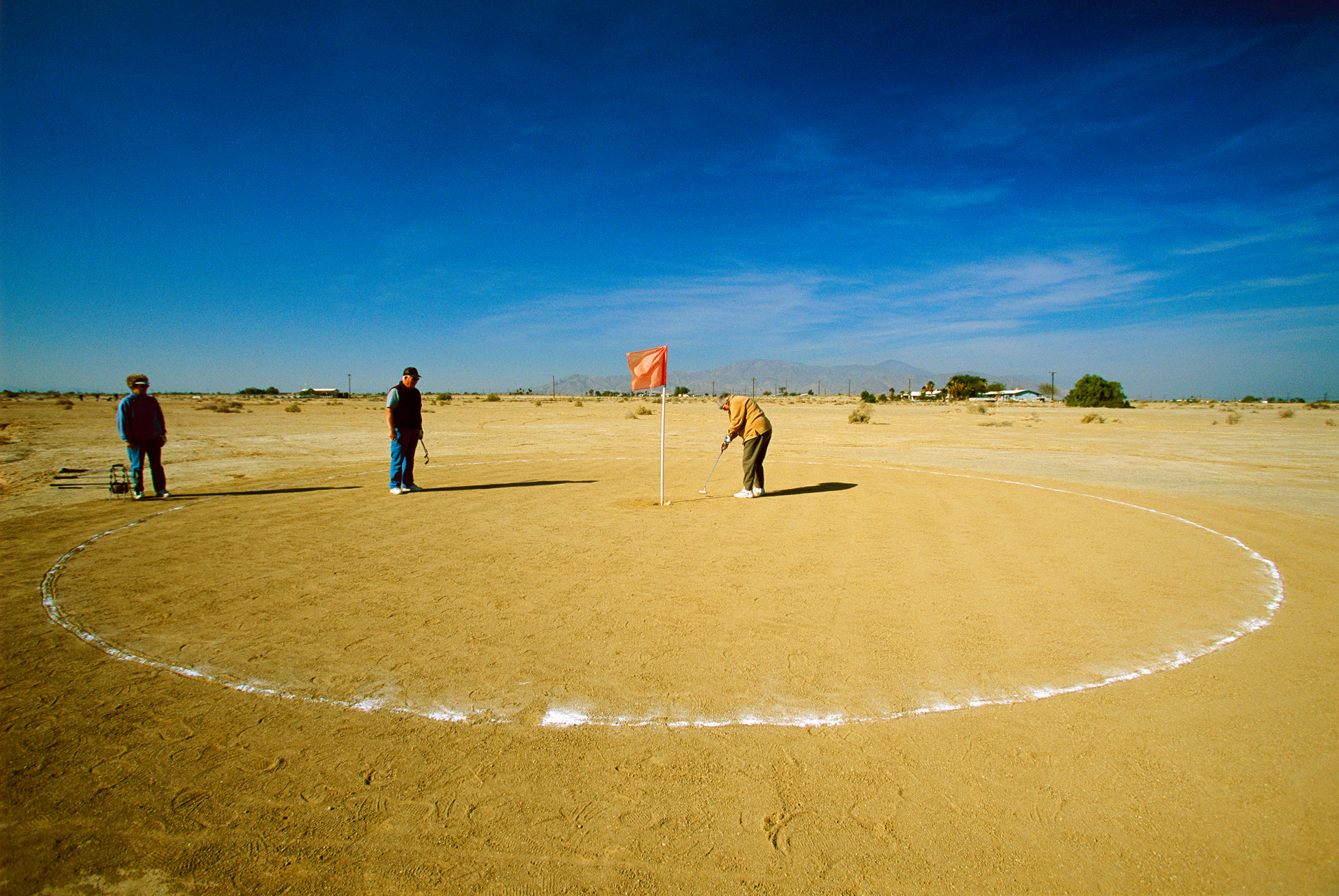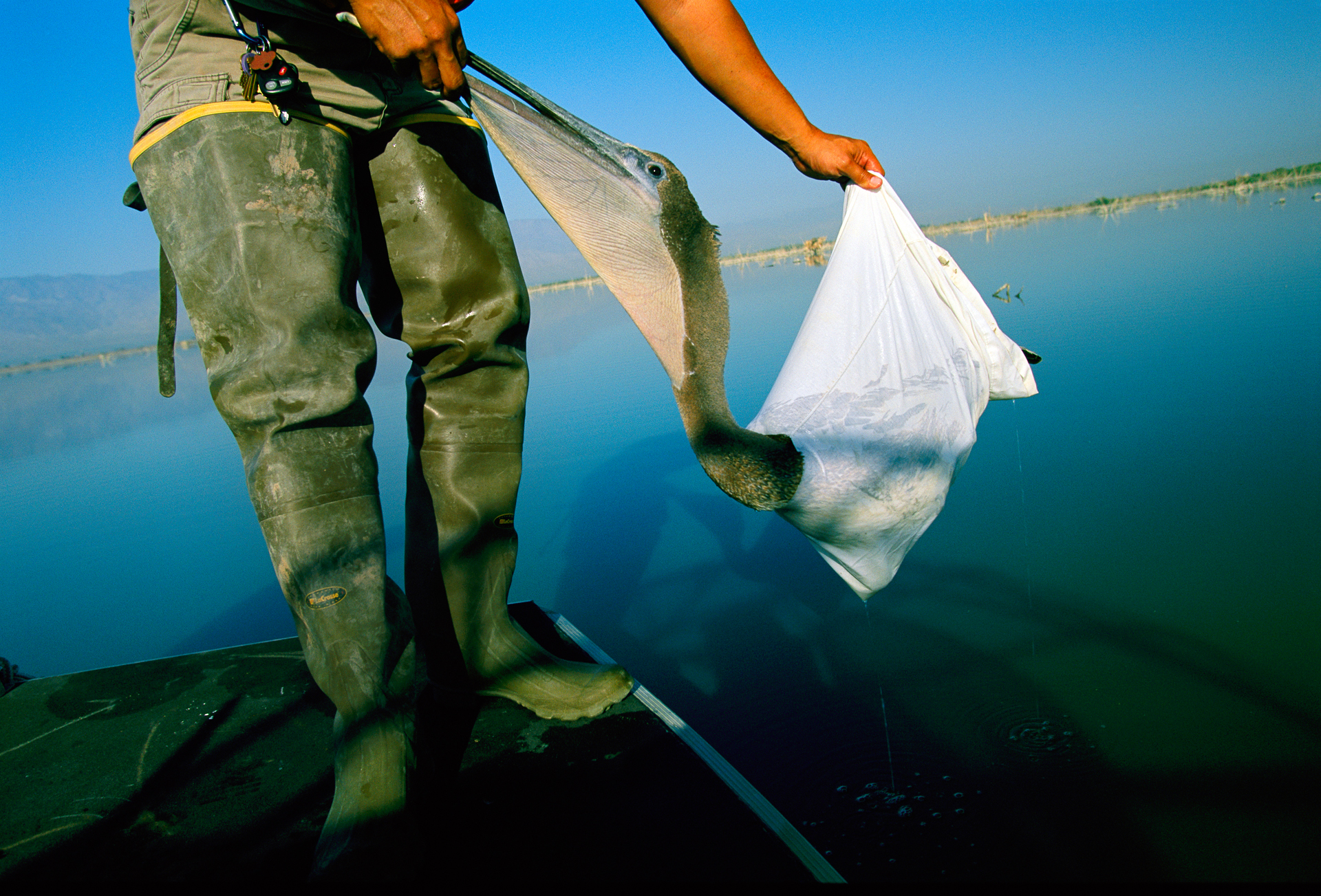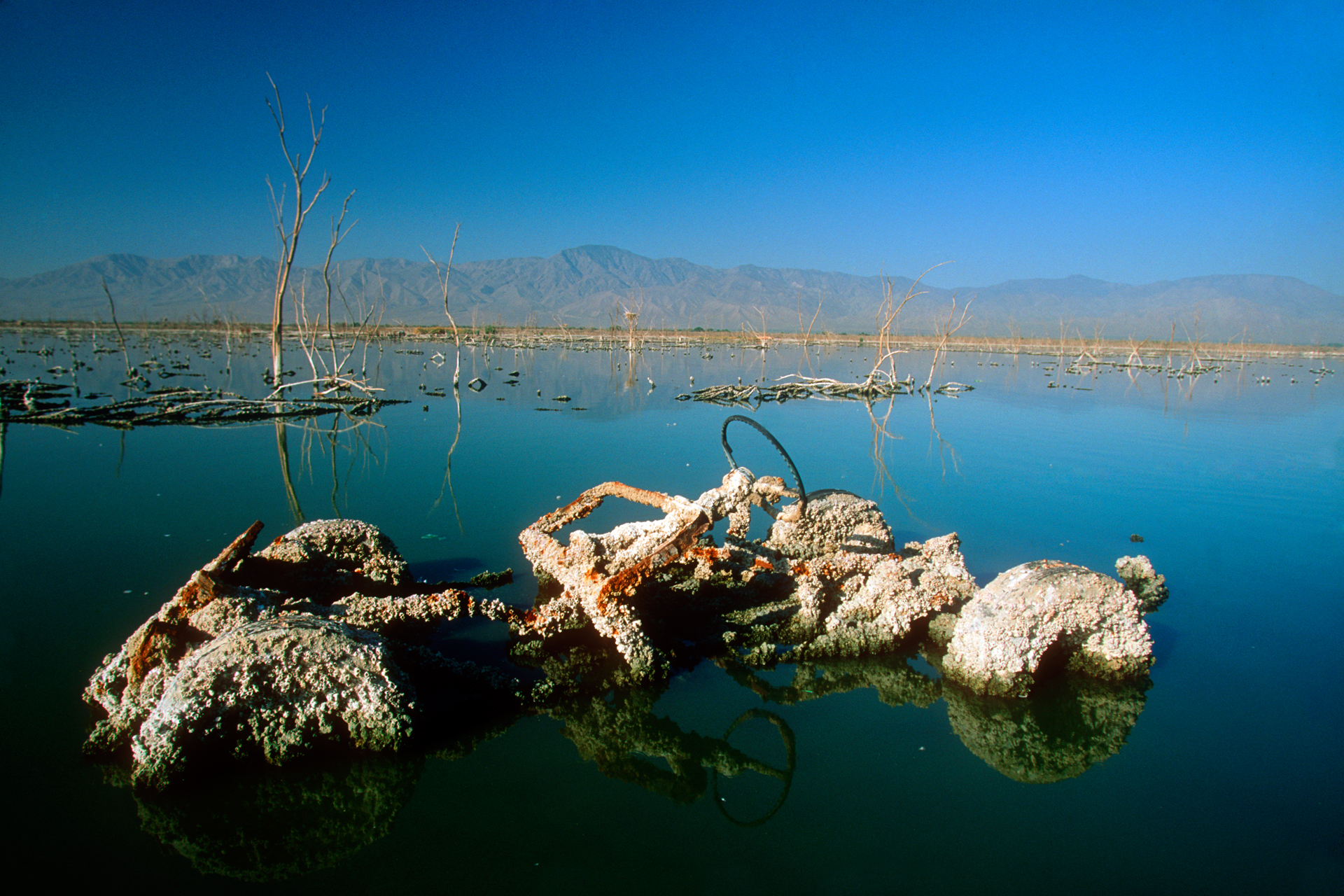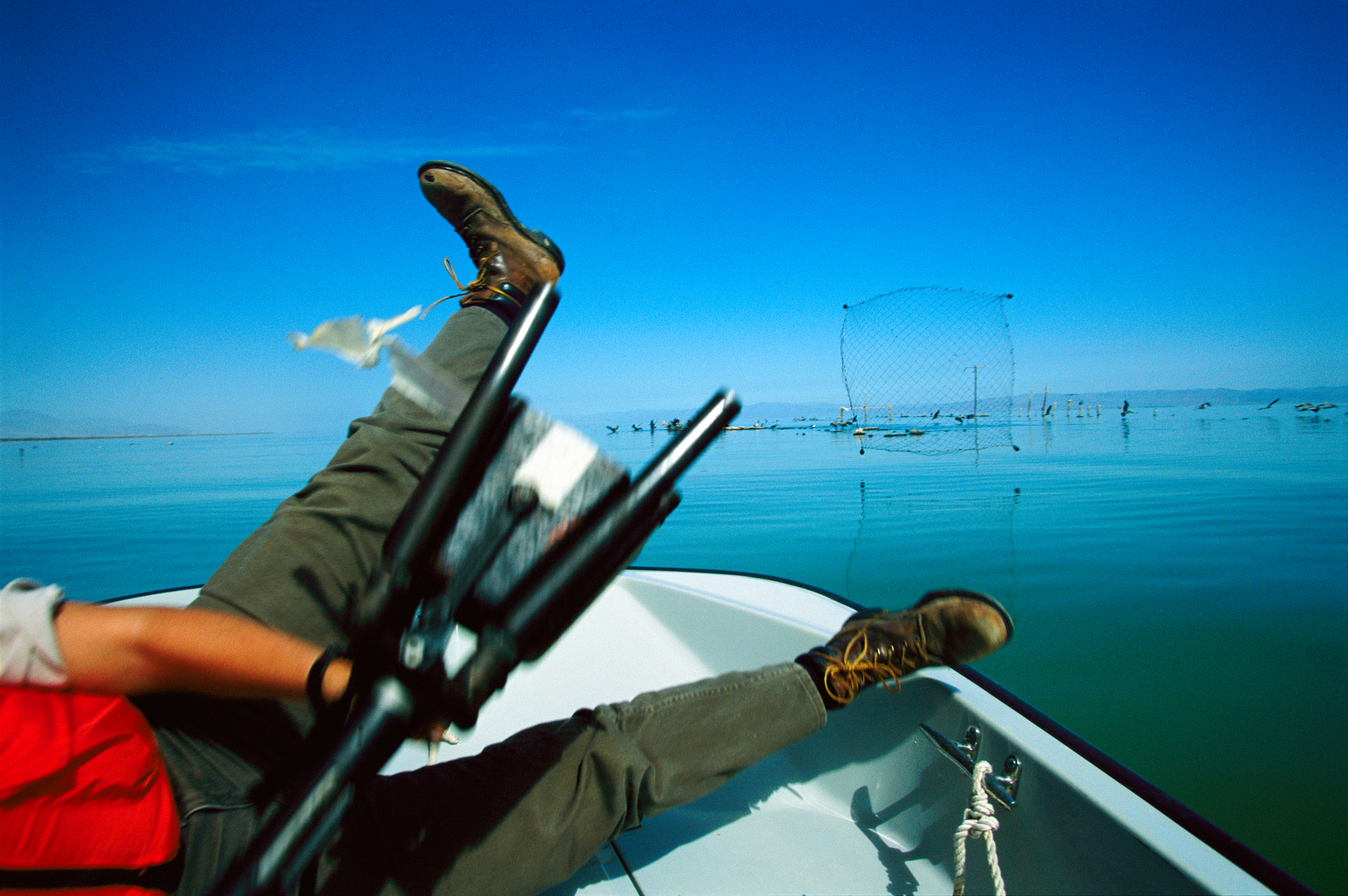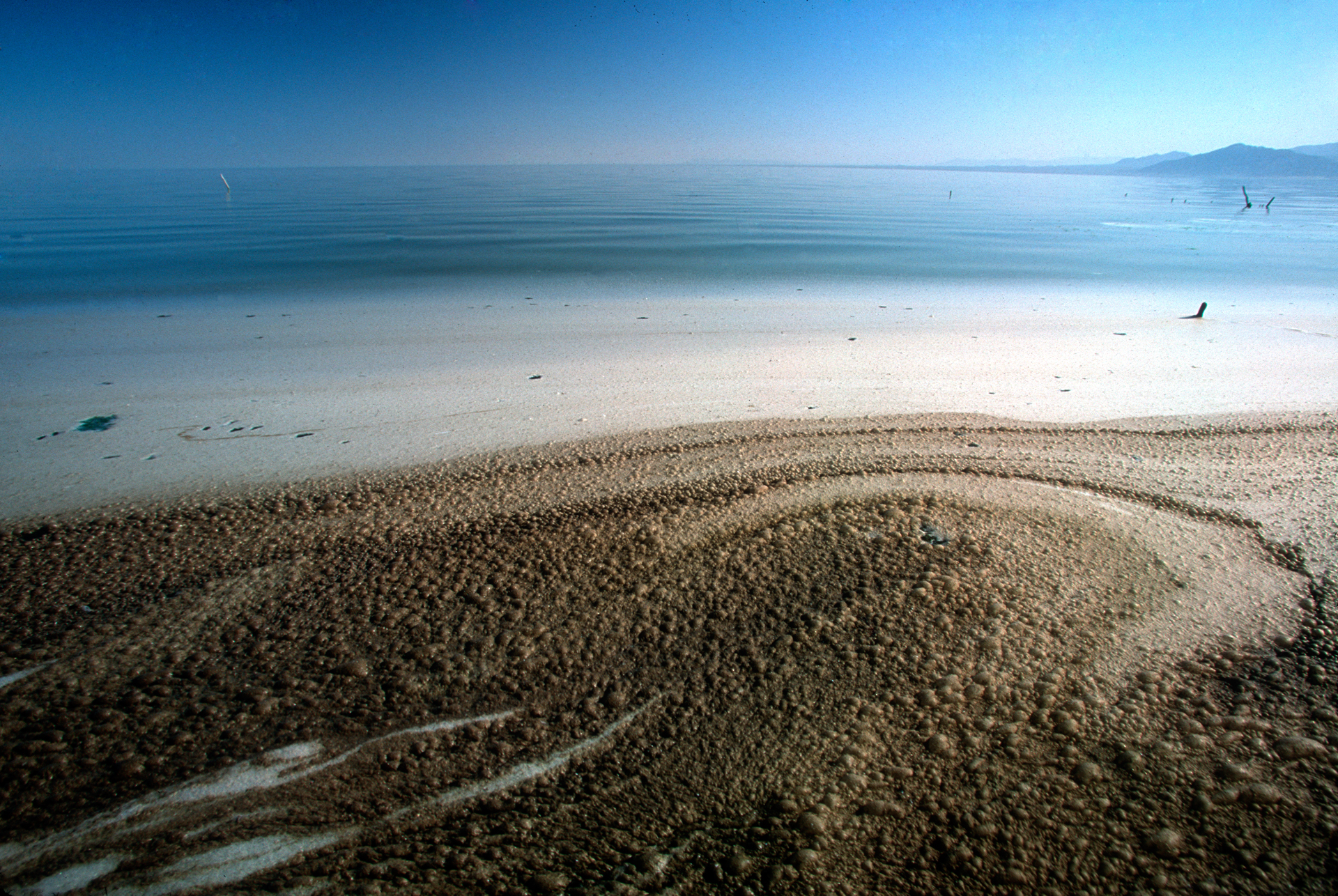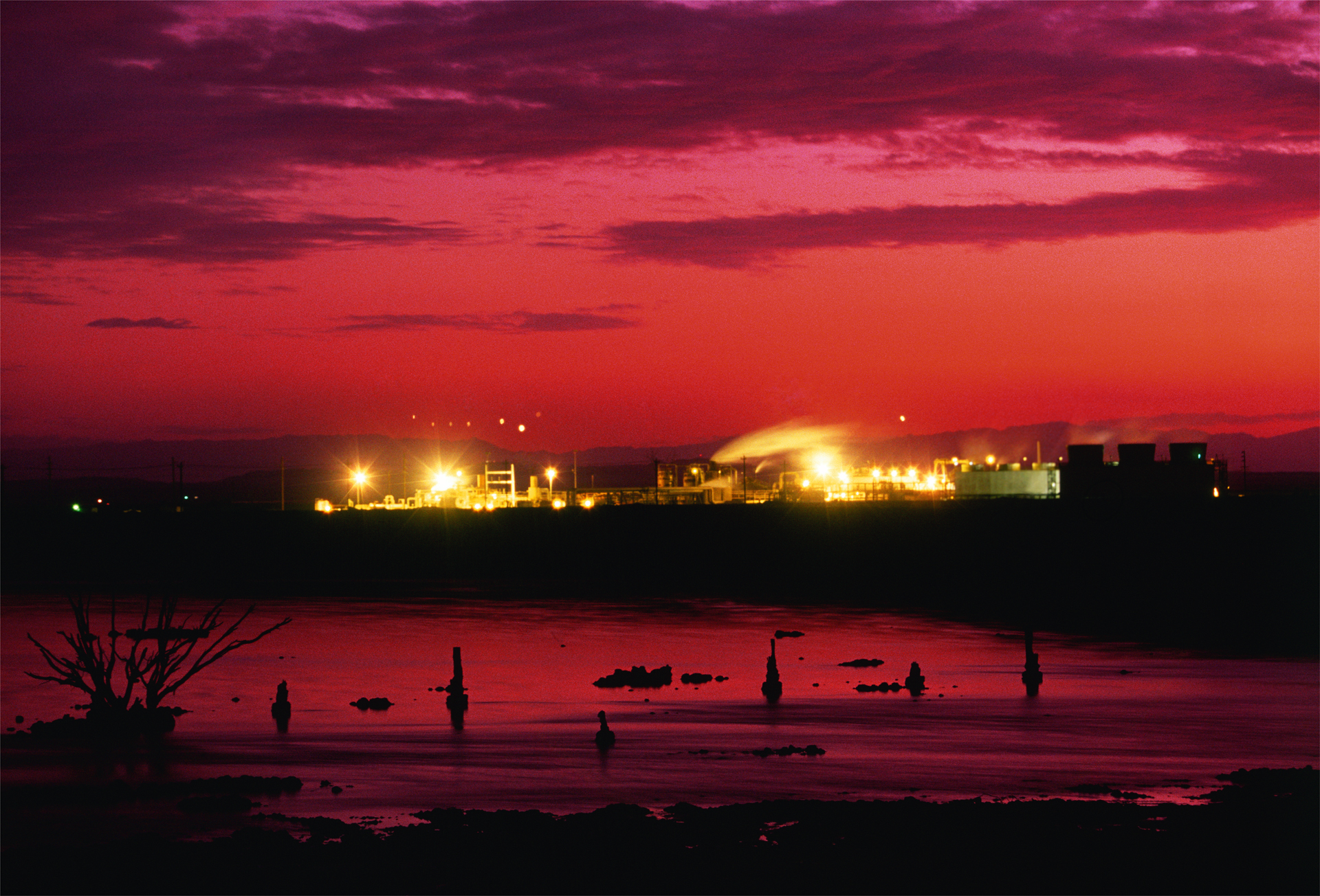A victim of geography and hard-ball politics, the Salton Sea is California’s largest, most troubled lake. It lies 227 feet below sea level with no outlets and very thirsty neighbors, including a billion dollar farm economy in the bone-dry Imperial Valley, 124 golf courses, and salt laden wetlands hosting a menagerie of wildlife in growing crisis.
With low levels of rainfall and only few inlets, the Salton Sea depends on the Imperial Valley’s agricultural run-offs for its survival. The run-offs, however, are filled with nutrients from the fields, creating algae blooms that deplete the Sea’s oxygen and kill much of its fish population. In the 1990’s this oxygen depletion created a massive die-off, several million fish in a single day, triggering a bout of avian botulism that felled some 10,000 pelicans. (The pelican is just one of many bird species that migrate to the area along the Pacific flyway in the tens of thousands.)
Now another concern is looming. In order to sustain the Imperial Valley’s billion-dollar farm economy, the area soaks up more water than Los Angeles and Las Vegas combined – water that neighboring populations, like San Diego in the south and Palm Desert in the north, rely upon. In the fight over water rights, the Salton Sea may well be the loser. Already 25% saltier than the Pacific Ocean, the salinity in the Salton Sea is expected to constantly increase, potentially killing all of its life and turning it into a biologically dead sea.

